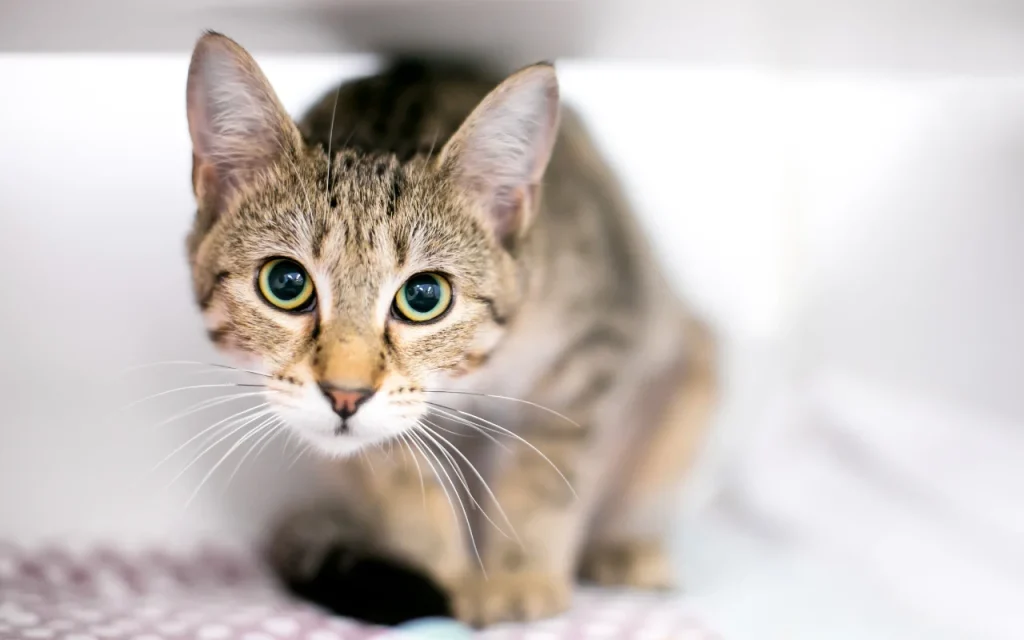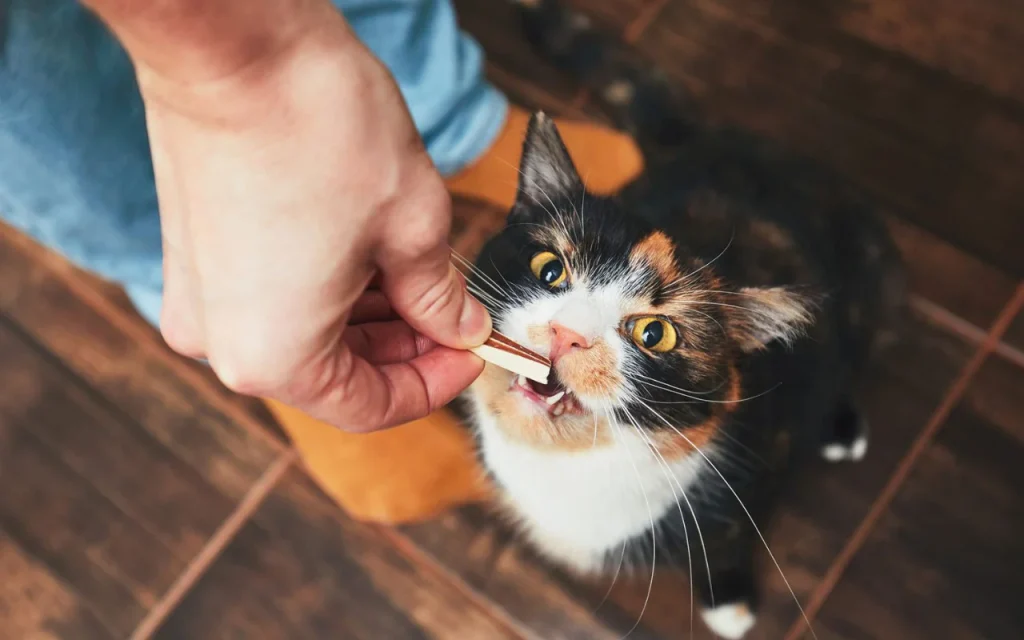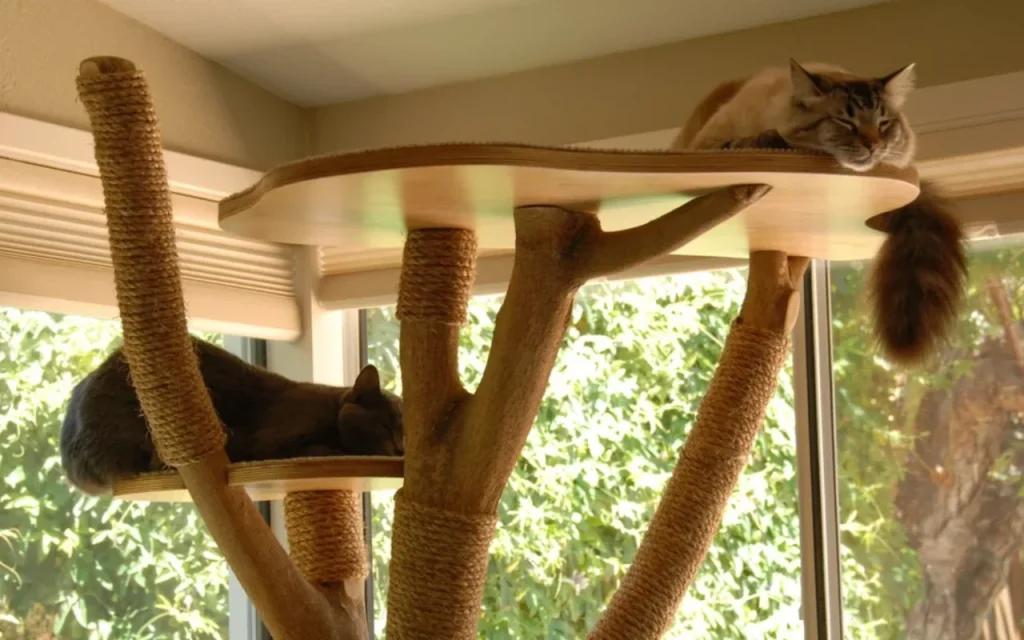Bringing a new cat into your life – it’s meant to be all purrs and happy head-butts, right? But sometimes, the little furry soul you’ve welcomed home seems to view the world, and maybe even you, from underneath the sofa, a tiny shadow darting away if you so much as sneeze. If you’re living with a cat who’s more skittish than social, your heart probably goes out to them every single day. You just want to scoop them up and tell them everything’s okay, but you know that’s likely the last thing they want.
Please, before we even start, know this deep down: a shy cat isn’t a cat who’s “gone wrong,” and their fear isn’t some sort of judgment on you or your home. Maybe their early days were a bit rough, or they just didn’t get those crucial early experiences of gentle human hands and happy household noises. Or, you know, sometimes it’s just their unique little personality to be more of a worrier. As a vet, I’ve seen so many of these initially terrified kitties gradually, step by tiny step, find their brave paws and blossom into wonderfully affectionate companions. It truly, truly takes a mountain of patience, a deep well of understanding, and a real willingness to almost get down on their level and see the world from their cautious point of view.
So, instead of a formal list, let’s just chat, you and I, vet to cat lover, about a whole bunch of things – I reckon we can come up with at least ten good ideas – that can really help these gentle souls feel safer, and hopefully, over time, a lot more friendly.
Starting at Square One: Making Them Feel Genuinely Safe

You know, before any of us can even think about making friends or feeling relaxed, we need to feel safe, right? It’s exactly the same for a cat, especially a nervous one. So, the absolute first thing we need to sort out is giving them a rock-solid “safe base” (that’s idea number one!). This isn’t just a comfy bed; it’s their little fortress of solitude, their “nobody can bother me here” zone. Think about a quiet corner, maybe a dog crate with a blanket draped over it to make it dark and den-like, or even just the bottom of a closet that’s all theirs. Pop their food, water, and a litter box nearby (though maybe not right beside their dinner plate – cats can be funny about that!). The golden rule? When they’re in that spot, they are off-limits. No reaching in, no coaxing out, unless they very clearly invite you. It’s their panic room, and respecting that is huge.
Now, hand-in-hand with that safe spot is letting them feel like they’re in the driver’s seat. Imagine how scary it is if you’re small and unsure, and big things keep trying to make you do stuff! So, letting your cat call the shots on interactions (idea number two!) is massive. This means you don’t force cuddles or play. Instead, you just be there. Sit quietly in the same room, read a book, watch TV. Let your calm, non-threatening presence just become part of the scenery. If they make a brave foray out, don’t pounce on them with attention. Maybe offer a slow blink – that’s a lovely cat way of saying “I’m friendly.” If they come closer, you can offer a still hand for them to sniff. If they rub, great! If they bolt, that’s okay too. They need to learn that they have control.
Building Bridges with Good Things (and Good Smells!)

Okay, so they’ve got their safe zone, and you’re letting them be the boss. What next? Well, most cats are pretty motivated by their tummies! Using really special, high-value treats (idea number three) can work wonders. We’re not talking their usual kibble here. Think tiny bits of plain cooked chicken, a little tuna, or those super-smelly soft treats they go wild for. The idea is to create a wonderful association: “When that human is around, amazing, tasty things happen!” Start by just leaving treats near their safe spot for them to find. Gradually, you can try tossing them a little closer to where you’re sitting, letting them brave coming a bit nearer. No pressure, just good things.
And while we’re talking about good associations, let’s not forget the power of scent. Cats live in a world of smells. So, getting them used to your scent in a super low-key way (idea number four) can really help. Try leaving an old t-shirt you’ve worn (unwashed is best, sorry!) near their safe spot or their food bowl. Or you can rub a soft cloth on your own face and hands to pick up your unique pheromones, and then just leave that cloth somewhere they’ll find it. It’s like leaving a little piece of “you” around that they can investigate on their own terms, helping them learn that your smell equals safety and comfort.
Gentle Interactions: Play, Voice, and Those First Tentative Touches
Now, for a shy cat, direct, hands-on interaction can be a long way off. But play? Play can be an amazing icebreaker! Interactive play from a distance (idea number five) is brilliant. Get a good wand toy – one with feathers or a long string – so you can be at one end, and the fun “prey” can be way over at their end. Wiggle it enticingly, let it dart behind things, and, crucially, let them “catch” it often. This builds confidence like you wouldn’t believe, and they’re interacting with you through the toy, which is much less scary.
Your voice matters too. Think about how you talk to a tiny baby or someone who’s a bit nervous – you naturally soften your voice, right? So, using a soft, gentle, predictable voice (idea number six) whenever you’re around your cat is key. Just chat to them quietly as you move around the house. Let them get used to the sound of you being calm and reassuring. And try to avoid sudden loud noises or movements that could startle them. If you’re going into a room where they might be, maybe make a little soft sound first so they know you’re coming.
Eventually, hopefully, they might start to show a tiny bit of interest in a gentle touch. This is where the art of the “almost-pet” or the super-brief touch (idea number seven) comes in. If they rub against your offered hand, maybe give them just one gentle stroke on their cheek or head (cats usually prefer these spots to being petted all down their back, especially if they’re nervous). Then stop. See if they lean in for more. If they do, great, maybe one more. If they don’t, or if they flinch even a tiny bit, just pull your hand back slowly. Always, always on their terms.
Boosting Their Inner Brave Cat: Enrichment and Support

A cat who feels generally good and confident in their environment is often a cat who’s more willing to be brave. So, making their world interesting and enriching (idea number eight) can really help. This means things like cat trees or shelves so they can get up high (cats love to survey their kingdom from a safe vantage point!). Puzzle feeders that make them think a bit for their food can be great confidence boosters too. Safe access to a window where they can watch the birds and squirrels (aka “cat TV”) is fantastic stimulation.
Sometimes, these little souls need a bit of extra support to help them feel calm, and that’s where feline pheromone products (idea number nine) can be really useful. You’ve probably heard of Feliway – it comes as a plug-in diffuser or a spray, and it releases a synthetic copy of a cat’s natural “happy” facial pheromones. It’s not a magic bullet, but it can really help to create a background sense of calm and security in their environment, making them feel a bit less on edge and perhaps more open to your gentle attempts at friendship. Many vets recommend trying it.
The Most Important Ingredient of All: Patience (and Knowing When to Ask for Help)
And finally, perhaps the biggest “tip” of all (let’s call it idea number ten, the big one!) is having oceans of patience, celebrating every tiny victory, and knowing when it’s time to call in some professional backup. Honestly, this is a marathon, not a sprint. There will be good days, and there will be days when it feels like you’re going backwards. That’s okay. That’s normal. That little moment when they don’t bolt when you walk into the room? That’s HUGE. When they eat a treat a little closer to you than before? Amazing! Acknowledge these tiny steps.
And if you’re really struggling, if their fear is profound, if they’re not making any progress despite all your loving efforts, or if you’re just feeling overwhelmed, please, please talk to your vet. They can rule out any underlying medical things that might be making them feel anxious, and they can also refer you to a qualified veterinary behaviorist or a certified cat behavior consultant. These amazing professionals can offer really specialized, one-on-one help and create a plan tailored just for your cat. Sometimes, for very anxious cats, medication from your vet can also be a really helpful temporary tool to just lower their anxiety enough so they can learn that the world isn’t so scary.
Helping a shy cat find their courage and learn to trust is one of the most incredibly rewarding things you can do. It takes time, it takes kindness, it takes understanding that you’re working on “cat time,” not human time. But those first purrs, those first voluntary head-butts, that moment they choose to sit near you just because… oh, they are absolutely priceless. You’re doing a wonderful thing by wanting to help them.











